There’s something uncommonly soothing about walking through a grove of bamboo. The air feels fresher and the soul feels cleaner. It’s a warm and fuzzy sensation that you can’t quite put your finger on. Equally, gardening with bamboo can be a very relaxing and therapeutic experience. It’s tactile and down-to-earth.
But when it comes time to research a botanical question concerning your bamboo, you may encounter a barrage of technical jargon. You might even feel like you’ve stumbled into a Latin class 15 minutes late without having done your homework.
Sure, the bamboo terms and vocabulary can sometimes be a little intimidating, but you needn’t be overwhelmed. It’s not exactly brain surgery, after all. Not quite. Even though the terminology could conjure up painful memories of undergraduate courses in anatomy and physiology.
To make the subject matter a bit more manageable, we’ve put together this helpful glossary of specialized words related to bamboo. We’ve even included some diagrams to help remove the guesswork. And since there are several hundred cultivars of bamboo to choose from, we’ve tried to portray that variety with a few different photos.
NOTE: This article first appeared in September 2019, most recently updated in May 2024.
Glossary of grasses: Bamboo terminology and vocabulary
auricles: In botany, these are small ear-like projections from the base of a leaf or petal. With bamboo, you can sometimes see these small ear-like projections at the base of the culm blade, just above the ligule. In many varieties of bamboo, the auricles are too small to discern, but you can use them to help distinguish one species from another.

blade: This leaf-like extension grows from the tip of the sheath. The shape and structure of the blade varies between species, sometimes short and broad, sometimes long and wavy.
branch node: In the same way that the main culm of the bamboo has nodes, the individual branches also have nodal rings that look very similar.
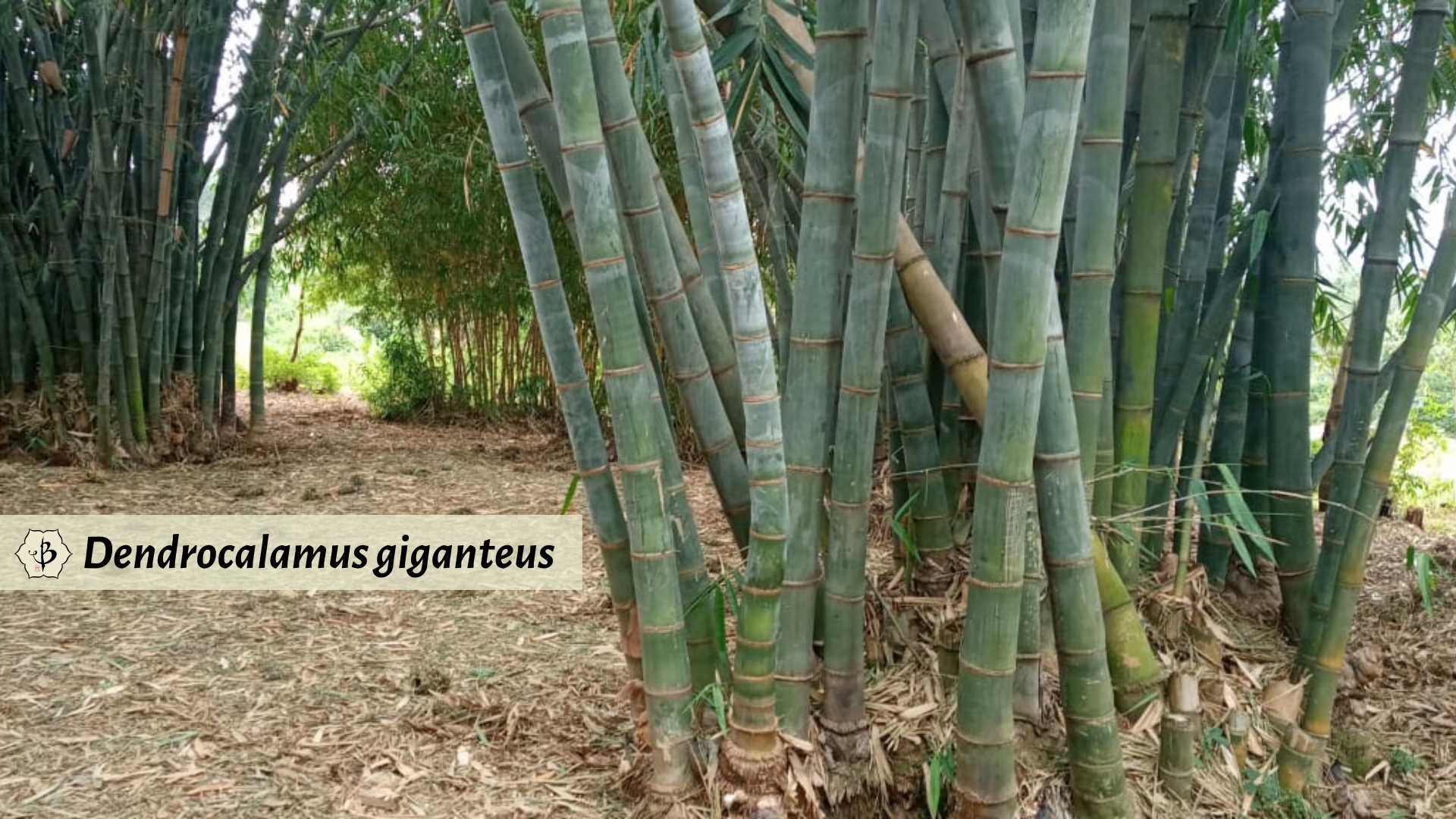
clumping bamboo: The 1,600 or so varieties of bamboo are typically divided into two classes: running and clumping. Clumping bamboos have sympodial rhizomes with a much more compact growth habit, making them far less likely to become invasive. Sometimes known as pachymorphic rhizomes. Clumping bamboo is generally native to tropical and subtropical regions, and the most common genus of clumping bamboo is Bambusa. See running bamboo below, and check out our in-depth article on Clumping bamboo.
culm: Because bamboo belongs to the grass family (Gramineae or Poaceae), its main stem is properly called a culm, rather than a stalk or a trunk. In casual parlance, we also refer to the culms as poles or canes. In most cases, the culms are hollow, except at the nodes. But there are a handful of bamboo varieties with solid culms.
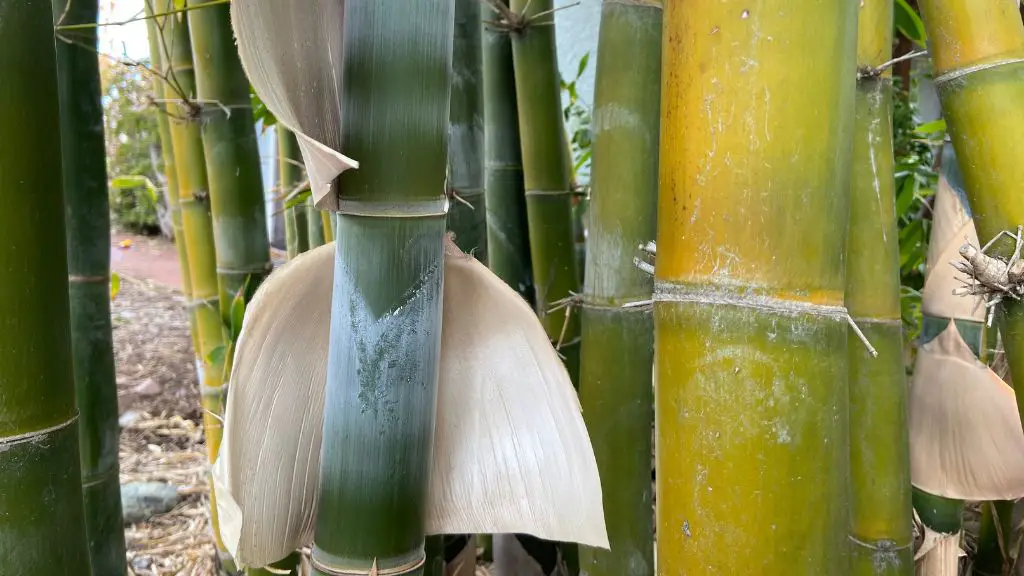
culm leaf: When new shoots or fresh culms emerge from the ground, they typically have a paper-like wrapper often called a culm sheath. Technically, the bottom part of this protective leaf is called the culm sheath, and the upper portion, above the ligule, is the culm blade. This leaf protects the tender, young culms as they go through their initial growth spurt. Eventually, the sheaths peel off and fall to the ground, providing additional mulch for the grassy grove. One of the most reliable ways to identify a bamboo species is by examining the features of the culm leaf.

cultivar: Another way to distinguish between varieties of bamboo, this is a fancier term for subspecies. Because there are so many kinds of bamboo, it’s not always easy to say if two different plants are actually separate species, or just different cultivars of the same species. Bambusa vulgaris, for example, includes an original species that’s green, and a subspecies, Vittata, which is yellow. Bambusa multiplex, for example, has several different cultivars. There may be around 1,600 species of bamboo, but closer to when we count all the subspecies and 2,000 cultivars.
genus: In binomial nomenclature, the scientific naming system with two names, the first name is the genus, followed by the species. The plural of genus is genera, and there are more than 100 genera of bamboo.
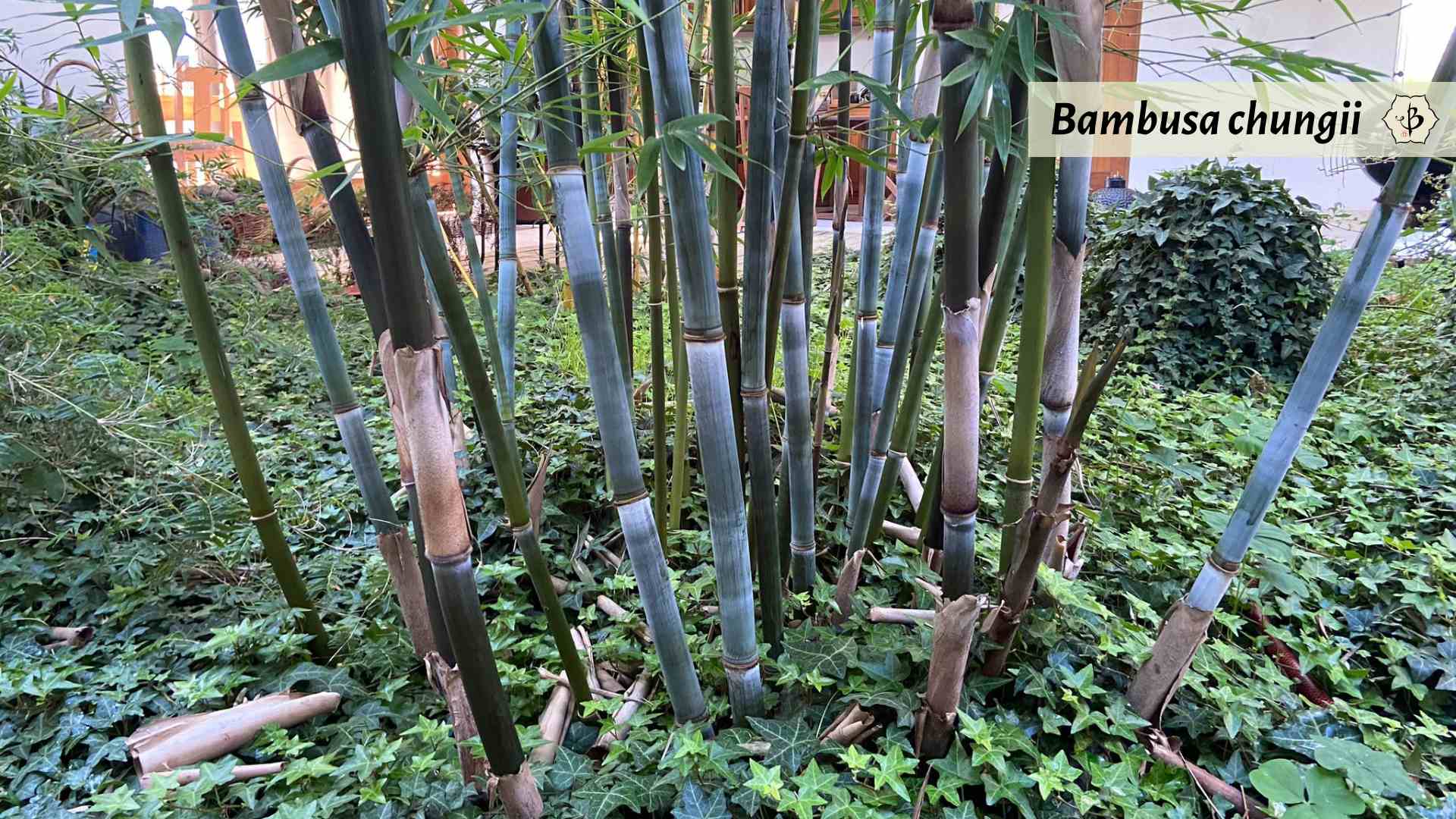
internode: This refers to the space between the nodes, or the rings, that give all species of bamboo their distinct appearance. Normally, the lateral branches grow from the nodes, and the internodes may have stripes or a sulcus groove or some other recognizable characteristic.
monopodial: The botanical term for the types of roots or rhizomes of running bamboo. These rhizomes grow and spread aggressively. They can travel as much as several feet underground before surprising you with a new shoot.
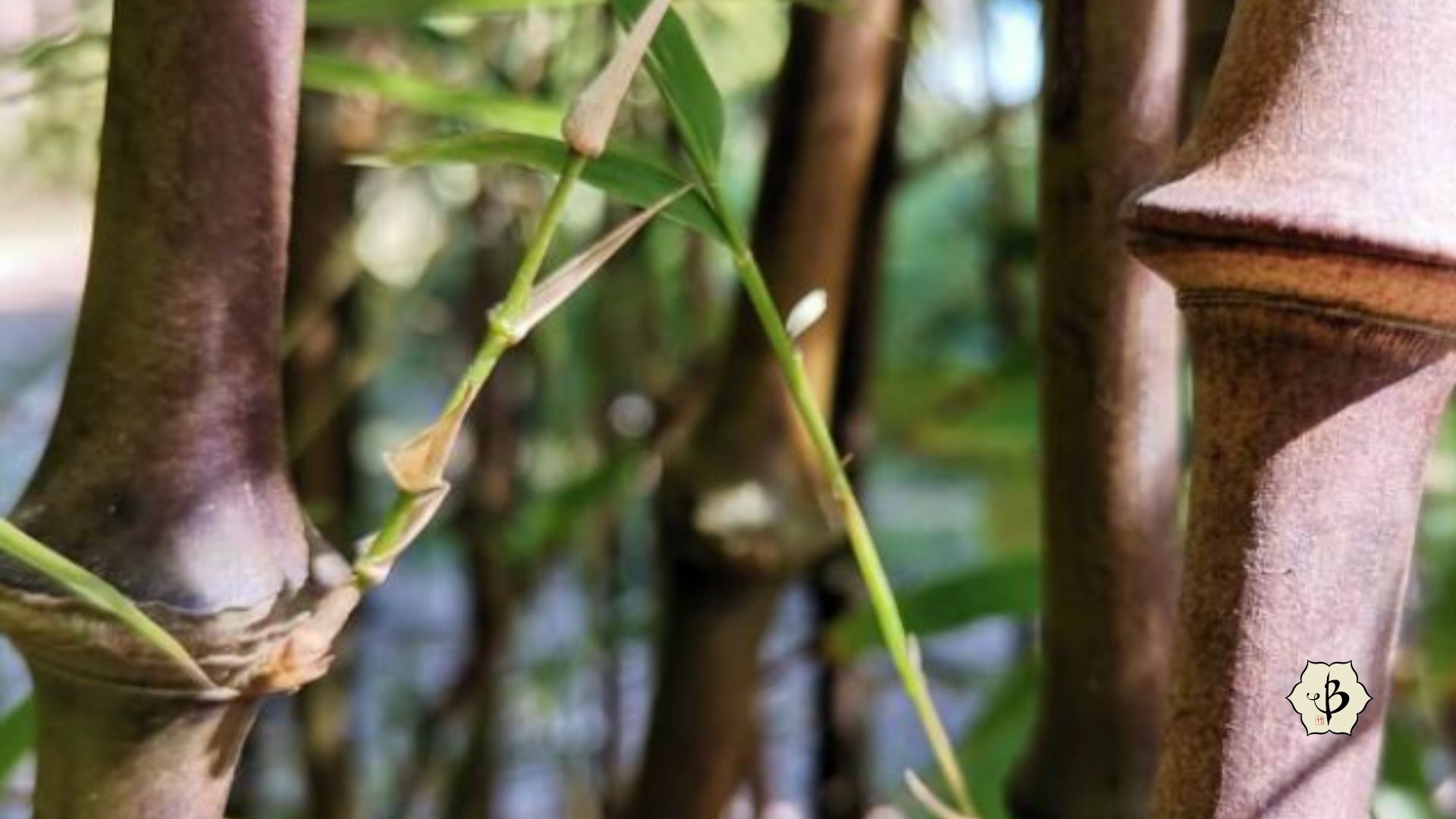
nodes or nodal joints: One of the most distinctive features of bamboo, this is the line of separation that gives bamboo its segmented look. We also call these the nodal rings, as they fully encircle the culms. (See the picture below.)
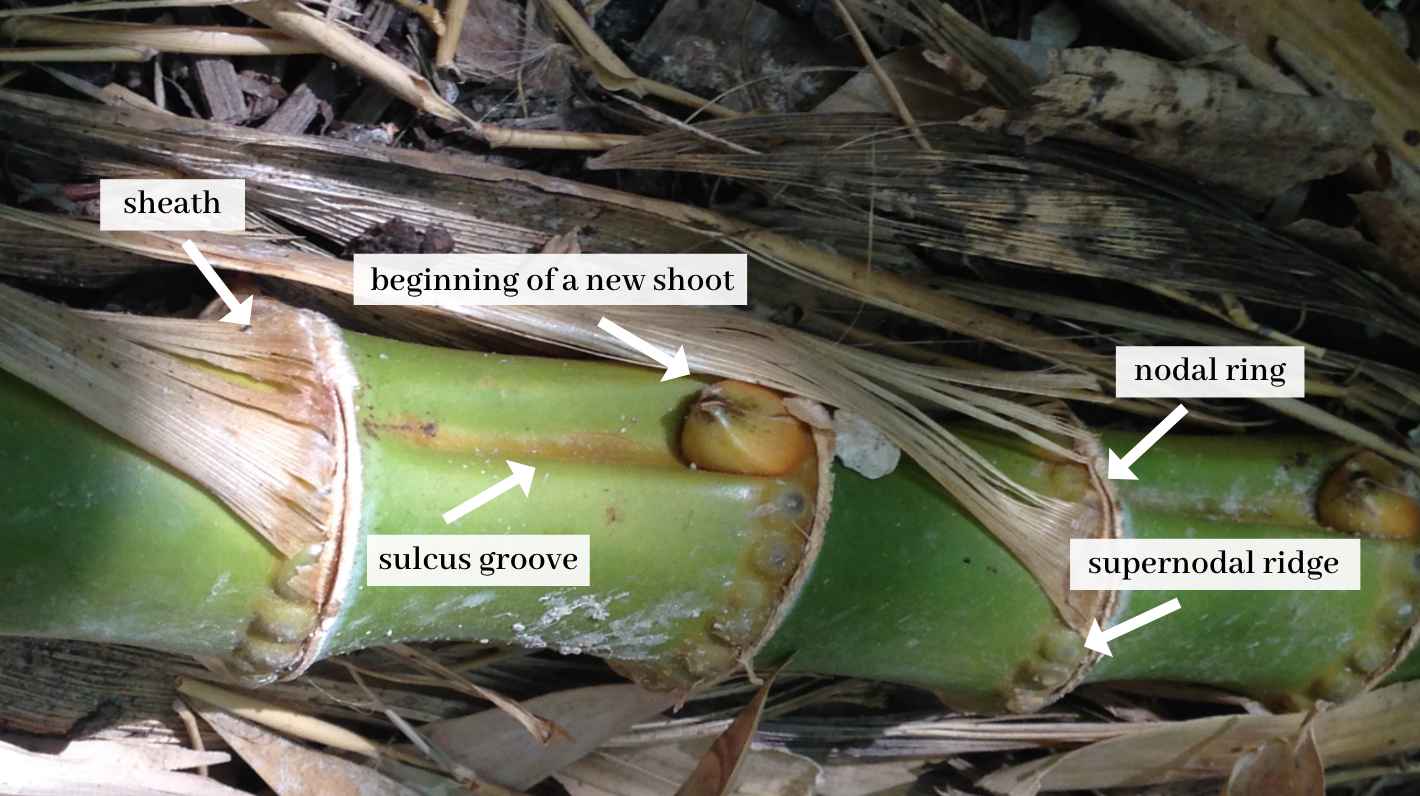
oral setae: These small hairs typically grow close to the auricles or around the base of the culm sheath. Some species of bamboo have larger oral setae than others, and sometimes they are too small to see.
Phyllostachys: One of the most common and widespread genera of bamboo. Native to China, these bamboos are more suitable for temperate climates, and are therefore quite popular outside the tropical zones. All species of Phyllostachys are runners, so some of them will have a tendency to become invasive. The internodal sulcus groove makes Phyllostachys one of the easiest genera to identify.

rhizomes: This is a special type of root system that spreads horizontally, from side to side. Rhizome, from ancient Greek, literally means “mass of roots”. Roots and shoots grow from the nodes of the rhizomes. In bamboo, the rhizome systems belong to one of two classes: monopodial (running) and sympodial (clumping). Sometimes the terms root and rhizome are used interchangeably, but they are actually very different parts of the plant and serve different purposes.
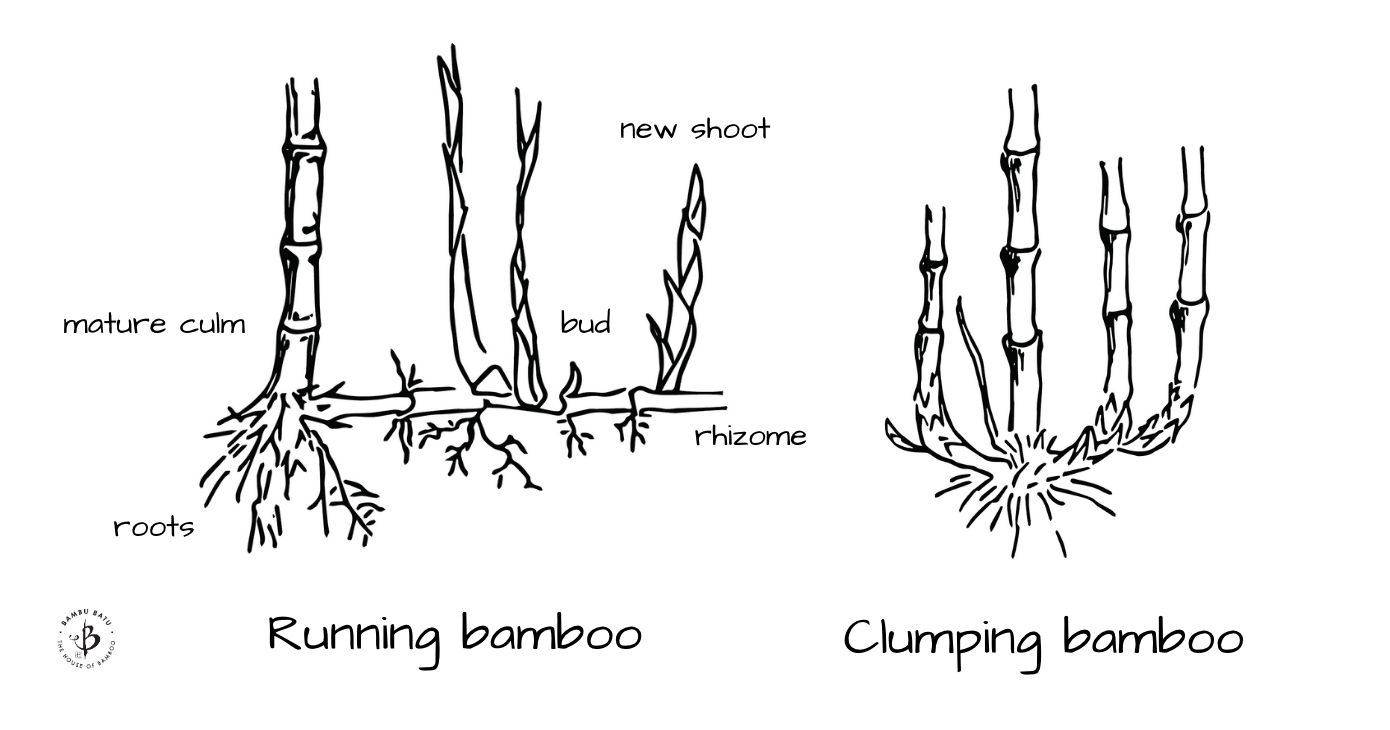
running bamboo: As opposed to clumping bamboo, these are the fast-spreading and aggressive varieties that your mother warned you about. These plants have monopodial or leptomorphic rhizomes. They are mostly native to temperate climates, so they generally do well outside the tropics and even in some very cold regions. Check out our more in-depth articles on Running bamboo, Bamboo containment, and Cold hardy bamboo.
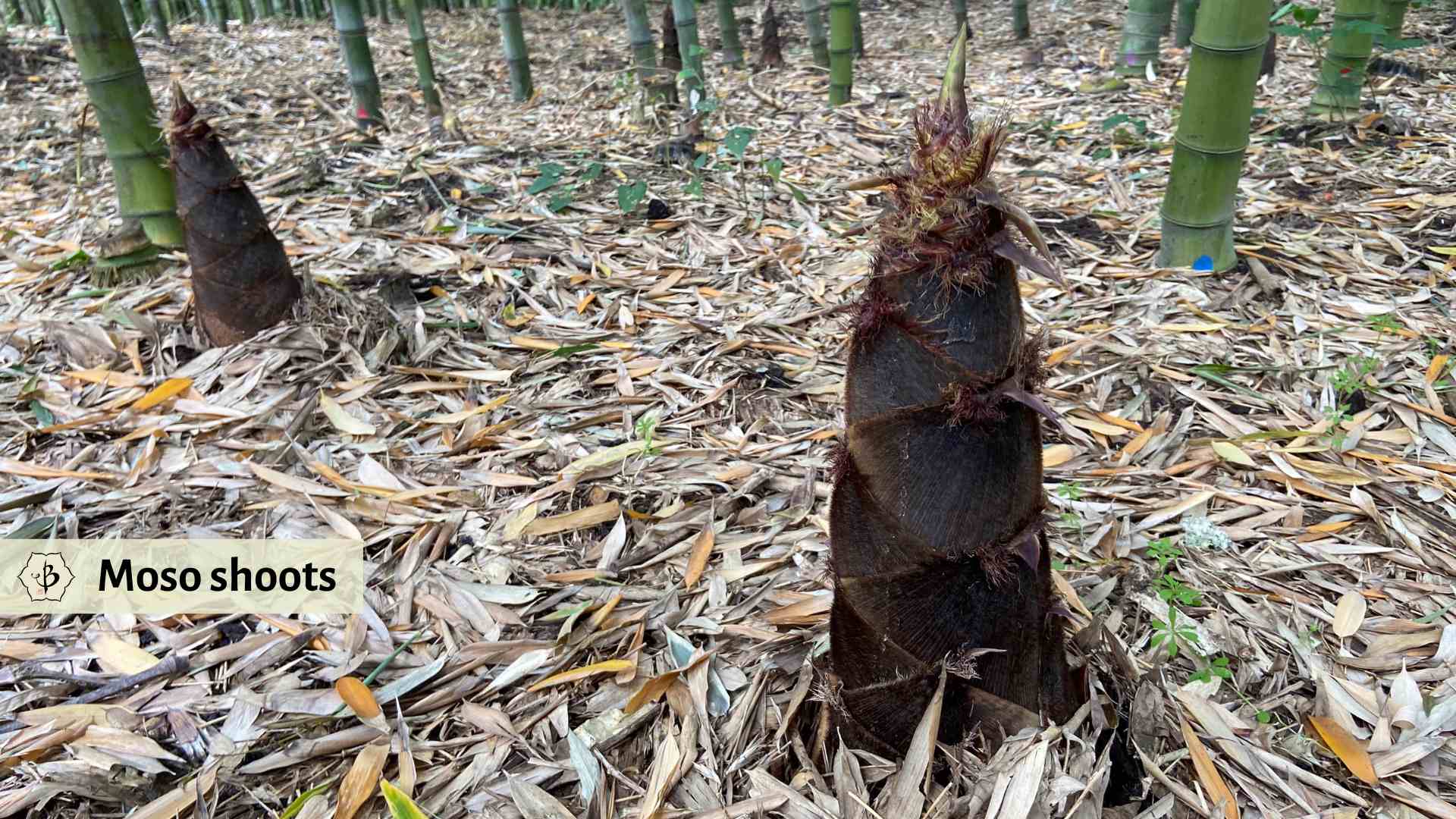
shoots: You may have heard that bamboo can grow as much as a meter a day. So as it grows upward, it literally shoots out of the ground. We refer to the new growths as shoots. Fresh young shoots can also make an excellent snack, nutritious and delicious. See our detailed article on Edible bamboo shoots.
species: In binomial nomenclature, the scientific naming system with two names, the first name is the genus, capitalized, followed by the species in lower case. No one can really agree, but there may be about 1,200 species of bamboo, in addition to another several hundred cultivars or sub-species.

sulcus groove: A distinctive feature in every member of the genus Phyllostachys, this is an indentation that runs along the length of the internode, alternating from one side to the other. In some species, the sulcus is very subtle, in others it is very prominent. When you see the groove, you know that it’s running bamboo.
supernodal ridge: Just above the nodal ring, you might notice a ridge. This feature varies between different bamboos, and it can be helpful in identifying the species.
sympodial: This is the botanical name for the types of rhizomes in clumping bamboo. They mostly grow close together, branching out often, to create a tight cluster of culms.
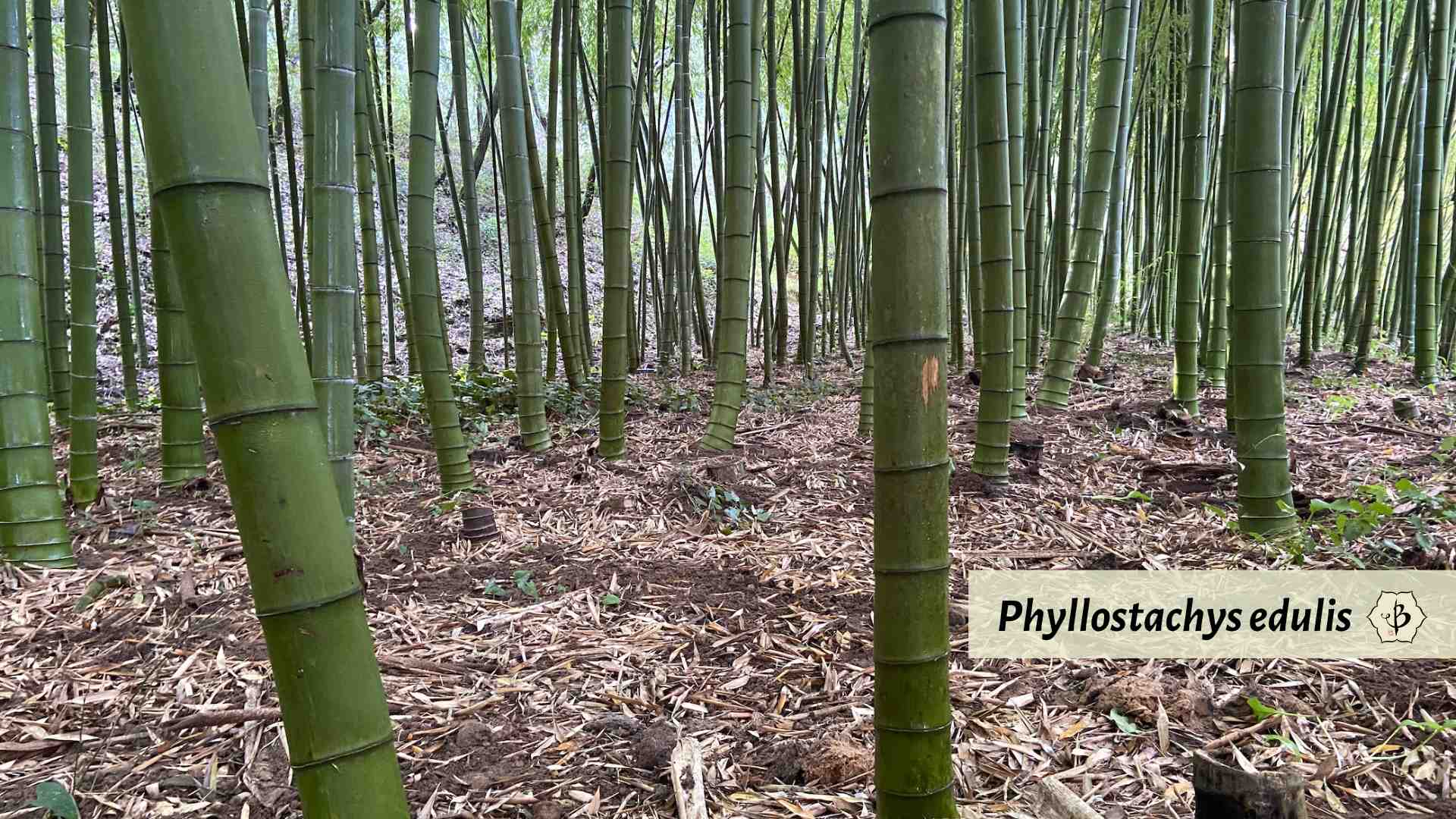
timber bamboo: Some of the most impressive bamboo can grow more than 5 inches in diameter and over 100 feet tall. Any specimen more than 3-4 inches thick and over 40 or 50 feet high is usually thought of as timber bamboo. Giant bamboo is another common name. Check out our article on Bamboo varieties for construction.
vascular bundles: Examining the cross-section of a bamboo culm, as pictured below, you can see all the small dots, which are a series of tubes transporting water and nutrients up and down the plant. The more densely they are arranged, the harder the wood will be. Near the outer perimeter, where the bamboo is the hardest, the bundles are closely impacted. The space between these bundles is called the parenchyma, comprised of soft connective tissue.
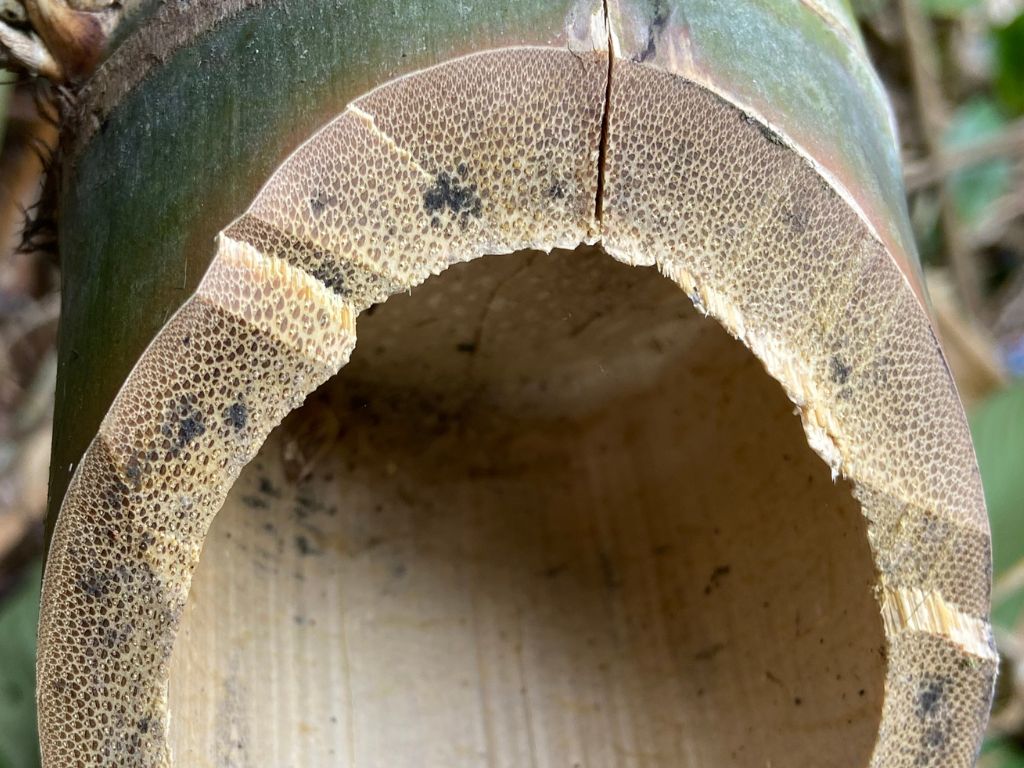
viscose: When bamboo is reduced to pulp and spun into thread, the thread and the fabric are called viscose. Rayon is another name for this. Moso bamboo is the most common bamboo species for making viscose fabrics.
Higher education
For more tips on how to grow bamboo and which varieties to select for your garden, you can check out more of our blog, beginning with these popular articles:
- Growing bamboo: A complete how-to guide
- 10 Best bamboo varieties for your garden
- Bamboo Morphology
- Best books about bamboo gardening
Can you think of any tricky bamboo terminology that we may have overlooked? Please let us know in the comments below.
FEATURE IMAGE: Nodal joint and branching of Semiarundinaria fastuosa, running rhizome of Phyllostachys viridiglaucescens, and a new shoot of Dendrocalmus asper with perky culm blades. Photos by Fred Hornaday.


























This item is very helpful. Thank you!